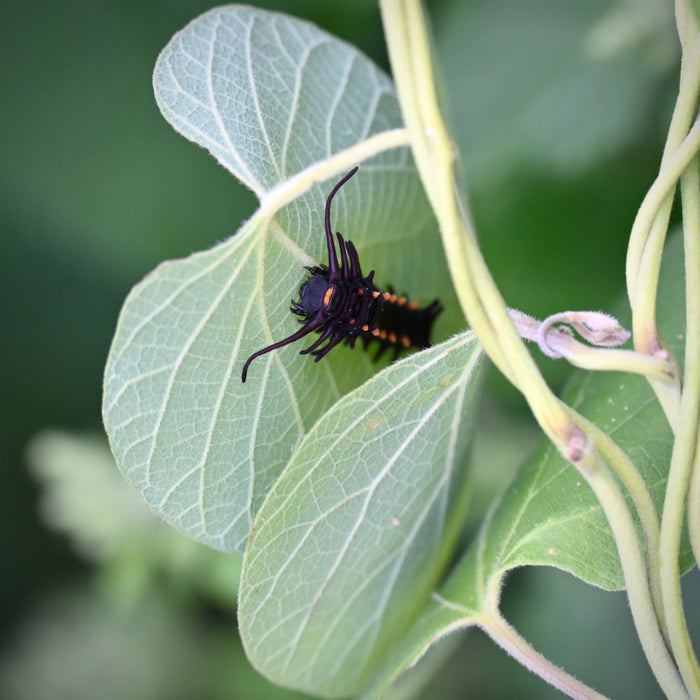
Wooly Pipevine (Isotrema tomentosum, formerly Aristolochia tomentosa) 2"x2"x3" Pot
Public Sale Exclusive: Preorder customers gain early access during preorder pickups.
A.k.a. wooly Dutchman’s pipe. With its broad leaves and curved flowers shaped like tiny saxophones, this unique vine looks like something out of the tropics for good reason- it is one of the northernmost members of a largely tropical genus! Known for being a local host of the pipevine swallowtail butterfly, these vines can be planted decoratively on a sturdy support (large arbor, gazebo, dead tree, sacrificial fence, etc). Vines max out at 75’, but rarely reach such sizes this far north. After they are established, plants can be aggressively pruned in the winter to control size.
Pollination: Likely 2+ individuals needed.
Light: Full Sun, Part Sun/Shade
Soil Moisture: Wet, Wet Mesic, Mesic
Soil Type: Loam, Sand, Silt
Height: 20’-30’
Width: 5’-10’
Bloom Color: Yellow
Bloom Time: May-Jun
Fruit: Cylindrical seed pods containing dozens of winged seeds mature in fall.
Fall Color: Yellow
Root Type: Taproot
Notable Wildlife Interactions: Little data available. Flowers attract a few small beetles and flies. Hosts the pipevine swallowtail butterfly. Likely browsed rarely.
Notes: Prone to suckering, and transplanting suckers is the quickest way to propagate. A twining vine that takes to trellises and fences well, but will need to be trained up smoother surfaces, such as dead trees or large support beams on a deck/gazebo. Slow to grow for the first two or three years while roots establish, then grows vigorously.
Pipevine swallowtails only host on plants from the aristolochia genus, which in Indiana is essentially restricted to wooly pipevine and Virginia snakeroot (Aristolochia serpentaria). Some non-native pipevine species are poisonous to the swallowtails and should not be planted. Indiana is on the edge of the range of the eastern Dutchman’s pipevine (aristolochia macrophylla) which is hardy here and safe for pipevine swallowtails.
Note: Isotrema tomentosum is a scientific synonym.
Shipping Unavailable









